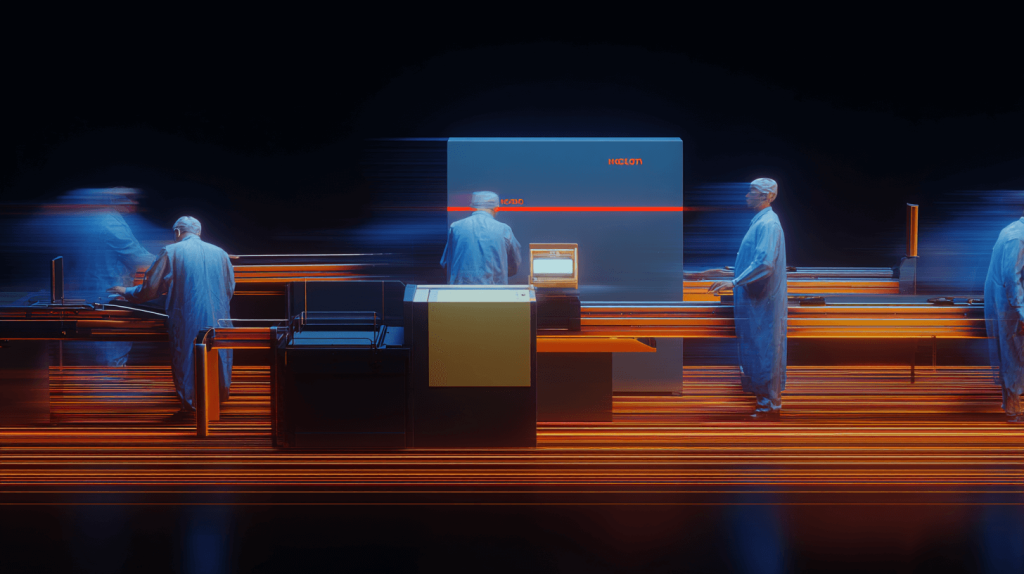Innovators worldwide filed a record 3.55 million patent applications in 2023, with U.S. patent activity surging in the fields of artificial intelligence and advanced manufacturing. Most of these applications involve new processes, not just products. Yet many inventors still question whether their innovative methods qualify for patent protection—and leave millions in potential licensing revenue on the table.
The answer is definitely yes: you can patent a method. Whether you’ve developed a breakthrough manufacturing process, a novel medical technique, or an innovative business workflow, method patents offer robust legal protection. A brief description of the invention is a crucial part of the patent application process, helping to clarify the core features of the method and distinguish it from prior art. This comprehensive guide covers everything from eligibility requirements to the latest 2025 USPTO guidance, which is making software method patents significantly more straightforward to obtain.
Key Takeaways
Method patents (a subset of utility patents) protect specific processes, provided the invention is applicable, novel, and non-obvious. They must also fall into a patent-eligible category—meaning a process with practical application, not an abstract idea. Only methods that meet these requirements are eligible for a patent.
Patent application process: Securing a method patent involves careful preparation, USPTO filing, and rigorous examination. On average, this process takes about 2–3 years from filing to approval, though expedited programs exist for a fee.
Pros vs. cons: Method patents grant exclusive rights and potential financial rewards (licensing royalties, competitive edge), but they also entail a lengthy, costly process and require public disclosure of the method.
2025 trends: Method patenting is expanding rapidly in fintech, edtech, SaaS, AI, automation, and manufacturing. Bank of America now holds ~6,600 patents, a 70% increase since 2019. The USPTO has responded with new 2025 guidance aimed at easing patenting of AI-driven software methods.
Can You Patent a Method? Understanding Method Patents
Method patents (also known as process patents) grant the owner the exclusive right to prevent others from using or selling the patented method without permission. These patents are a subset of utility patents and play a crucial role in safeguarding innovative processes across industries—from manufacturing techniques to medical procedures. A patented invention can refer to either a product or a process, depending on what is being protected by the patent.
One crucial nuance: medical method patents can be obtained in the U.S., but by law, they are not enforceable against medical practitioners or hospitals performing the procedure. This policy protects patient care while still allowing patent protection for the underlying innovation.
Definition and Scope
A method patent protects a specific way of doing something—it covers methods that transform materials or information to achieve a result. While some patents protect a physical invention, method patents often cover intangible processes or transformations. This can include anything from a new manufacturing technique to a medical procedure, showcasing the broad applicability of method patents. The primary distinction between a process patent and a product patent lies in what they protect: a product patent safeguards the end product, whereas a process patent protects the method itself.
Method patents typically last for 20 years from the filing date (if maintenance fees are paid), providing substantial exclusive rights to the inventor. However, the patent application must include a complete and enabling disclosure of the method, such that individuals with general knowledge in the field can comprehend and replicate it.
Examples of Method Patents Across Industries
Method patents are prevalent across industries, reflecting their diverse applicability:
Biotechnology: New methods for producing drugs or gene therapies can be patented to protect cutting-edge medical innovations.
Healthcare: Surgical techniques or diagnostic processes are often patented (though enforcement is limited as noted above). Methods of administering gene therapy or novel imaging techniques can be patented.
Manufacturing & Automation: Industrial processes frequently rely on process patents for production improvements. Method patents in this sector can also cover processes involving mechanical devices, not just software or chemical processes. Between 2013 and 2020, patent filings in additive manufacturing (3D printing) grew at a robust average annual rate of approximately 26%, nearly eight times the growth rate of other technology sectors, indicating a race to patent innovations in additive manufacturing and robotics.
Software & SaaS: Tech companies often patent algorithms and data-processing methods. Cloud computing providers have secured patents on unique data management workflows and security processes to support their SaaS platforms.
Fintech: Business method patents play a key role in financial technology. One example is an anti-fraud ATM transaction verification method that sends a secure one-time code to the user’s phone. Bank of America was granted 644 patents in 2023, nearly 20% related to AI and machine learning innovations for financial services.
Figure 1: Distribution of Bank of America’s 644 patents granted in 2023.
“Nearly half were in Information Security (28%) and AI/Machine Learning (18%), with significant shares in online/mobile banking (12%), payment technology (12%), and blockchain (6%).”
Source: Bank of America, “BofA Patents Increase Nearly 70% in 5 Years” (Press Release, March 6, 2024).
EdTech: Education companies patent methods for online learning and instructional technology, including AI-driven tutoring systems and adaptive learning platforms that personalize coursework based on real-time student performance.
Eligibility Criteria for Method Patents
For a method to be eligible for patent protection, it must satisfy several legal standards and fall within a patentable subject matter category. Patent law imposes strict limitations to ensure that only methods meeting specific criteria—excluding abstract ideas, laws of nature, and certain types of subject matter—are granted patent protection. A method must meet the following criteria to qualify for a patent:
Novelty Requirement
The invention must be new and not previously known. The method cannot have been publicly disclosed, used, or published anywhere in the world before the patent application’s filing date. During examination, the USPTO conducts rigorous prior art searches to ensure this requirement is met. Examiners interpret the novelty of a method based on the ordinary meaning of the terms used in the claims. The novelty requirement is fundamental—it ensures patents are granted only for truly new innovations, encouraging continuous innovation and preventing “re-patenting” of existing techniques.
Non-Obviousness Standard
The method must not be an obvious development to someone skilled in the art (an expert in the relevant field). The method should represent a significant step forward or a surprising solution, rather than an incremental improvement any skilled practitioner could easily deduce. The non-obviousness standard, codified in 35 U.S.C. § 103, is often the most challenging hurdle—it ensures that patents are reserved for meaningful advances, thereby fostering genuine technological progress.
Utility Requirement
The method must have specific and practical utility (usefulness). It should provide a tangible benefit, produce a desirable outcome, or be capable of use in real-world scenarios. A purely theoretical or academic idea is insufficient—the invention must work and serve a purpose. In the context of method patents, utility also implies that the process can be implemented to achieve the claimed result. A method must be more than just an idea; it must be a concrete, implementable process to qualify for patent protection.
The Patent Application Process for Methods
The patent application process for methods involves several critical stages, from preparation through USPTO examination and approval. The United States Patent and Trademark Office (USPTO) is the federal agency responsible for examining and granting patents. Understanding each step helps ensure successful navigation of this complex journey.
Preparing Your Patent Application
Preparing a patent application for a method requires careful attention to detail in describing each step and how they interrelate. This includes:
- Clearly defining the process steps in order, and any conditions or parameters for each step.
- Providing examples or embodiments of the method in practice to illustrate its utility.
- Ensuring the disclosure is enabling—anyone of ordinary skill should be able to replicate the method without undue experimentation.
If the application doesn’t meet all requirements, you’ll receive feedback from the patent examiner (an Office Action). This interactive process often involves multiple rounds of review and amendment before approval.
Filing with the USPTO
Filing involves submitting a written application with all required parts (specification, claims, drawings if needed, abstract) along with required fees. Almost all U.S. patent applications are now filed electronically through the USPTO’s Patent Center portal. Patent applications are submitted to the patent or trademark office, which oversees the granting of intellectual property rights.
For urgent applications, the USPTO offers Track One prioritized examination, which aims for final disposition within 12 months for an additional fee—significantly faster than regular examination.
Examination and Approval
Once filed, a patent examiner with relevant technology expertise reviews your application for formal requirements and evaluates claims for patentability by conducting prior art searches. Most first Office Actions include rejections or objections—this is normal and expected.
As of FY 2023, the average total pendency for business method patent applications was approximately 26.7 months, a decrease from over 36 months in 2018.
Figure 2: Average pendency for business method patent applications at the USPTO, FY 2015–2024.
“First action” pendency reflects the time until the examiner’s initial review, while “total pendency” reflects the time to final disposition (allowance or abandonment). After peaking above 36 months in 2018, pendency has improved significantly, dropping to ~25 months by mid-2024.”
Source: USPTO, Business Methods Pendency Statistics (Mid-Year 2024).
By mid-2024, pendency further dropped to ~25.2 months on average, reflecting efficiency improvements.
Once a method patent is granted, any party using the patented method without authorization may be considered infringing and subject to legal remedies.
Special Considerations for Software Methods
Patenting software-implemented methods presents unique challenges. Software and algorithm-based inventions often fall into a gray area because they can be characterized as abstract mathematical ideas, which aren’t patentable on their own. However, computer software, when combined with hardware or other technology, can make a method eligible for patent protection.
Patentability Requirements
A critical requirement for software methods is that they be rooted in computer technology and provide a concrete technical improvement. Simply implementing a known business procedure on a general computer isn’t patentable. However, software methods may be eligible if they:
- Provide a technical solution (faster or more secure computing).
- Control a physical process (optimizing factory operations or improving medical imaging).
- Solve a specific technical problem rather than just organizing human activity.
Key Legal Developments
The Supreme Court case Alice Corp. v. CLS Bank (2014) established a two-step test for patent eligibility: (1) determine if the claim is directed to an abstract idea, and if so, (2) check if it includes an “inventive concept” sufficient to transform the idea into a patent-eligible application. The Patent Act, particularly Section 101, provides the statutory framework for determining patent eligibility in such cases. Following Alice, the USPTO’s allowance rate for business method applications plummeted to under 10% in subsequent years.Figure 3: Allowance rates for business method patent applications at the USPTO, FY 2010–2022.
“Rates plunged below 10% in the years immediately following the Alice v. CLS Bank decision (2014–2016) before recovering to 34.2% by 2022 as more explicit examination guidance took effect.”
Source: USPTO, Business Methods Partnership Statistics: Allowance Rate Chart (2022).
2025 USPTO Guidance Update
In August 2025, the USPTO issued new guidance that could significantly reduce abstract idea rejections for AI and software-related applications. Key changes include:
- Examiners must show it’s “more likely than not” (>50% probability) that a claim is ineligible before issuing a rejection.
- AI-based methods involving steps that cannot practically be performed in the human mind should not be treated as abstract mental processes.
- Claims involving mathematical concepts don’t automatically count as “reciting” an abstract idea unless they purely formulate the math.
The allowance rate for business method applications has rebounded to 34.2% by 2022, suggesting improved prospects for well-drafted software method patents.
These updates are part of ongoing efforts to improve the patent system and ensure it continues to incentivize innovation while maintaining high standards.
Business Method Patents
Business method patents cover methods of conducting business, often implemented via technology. These patents were first clearly permitted in the United States in 1998, marking a significant shift in patentable subject matter.
Requirements for Business Methods
Following Supreme Court decisions, particularly Bilski v. Kappos (2010), business method patents generally must incorporate a technological element. Examples of potentially patentable business methods include:
- Online subscription models with novel technical infrastructure.
- Targeted digital advertising algorithms.
- E-commerce transaction systems that improve network security or efficiency.
It is important to note that not all business practices are eligible for patents—only those practices that involve a technological element or innovation may qualify.
A pure business concept without technological implementation typically isn’t patentable—involvement of technology, hardware, or specialized software implementation is usually required.
Notable Examples
- Amazon’s “1-Click” ordering system: This late-1990s patent enabled expediting online purchases with a single click, utilizing stored payment information—a clear competitive advantage in e-commerce. To defend against infringement claims, a company must be able to demonstrate prior use and maintain proper documentation of its business method.
- Financial technology innovations: PayPal obtained patents on online payment methods. Recent fintech patents include those related to cryptocurrency transaction processing and blockchain-based ledger management.
Current Challenges
Obtaining business method patents remains challenging due to:
- Strict USPTO scrutiny: Dedicated Art Units apply rigorous examination under eligibility standards.
- Court precedents: Alice and related decisions impose high bars for technical implementation.
- Post-grant challenges: The now-ended Covered Business Method Review program invalidated over 95% of challenged patents.
However, the current 34% allowance rate shows improvement as applicants adapt to post-Alice requirements by emphasizing technological aspects.
Advantages and Disadvantages of Method Patents
Method patents offer significant benefits but come with substantial costs and commitments that inventors must carefully consider.
In addition to monetization opportunities, patented methods can help businesses generate revenue through licensing and commercialization, especially when applied to automated technologies and innovative business models.
Benefits of Method Patents
Exclusive rights: A method patent provides 20 years of exclusive rights to the patented process, preventing competitors from using the same method without permission. This exclusivity can protect competitive advantage and secure higher profit margins.
Monetization opportunities: Patents are valuable assets that can be licensed or sold. Studies show each patent obtained by a startup can boost valuation by 15–50% depending on the industry. Investors view patents as innovation indicators and competitive barriers.
Strategic protection: Patent portfolios provide leverage in negotiations, deter lawsuits through cross-licensing opportunities, and can secure financing or government incentives for IP-rich companies.
Drawbacks to Consider
Lengthy and costly process: Patent prosecution often takes years and involves significant legal fees; over half of the surveyed companies spent more than $5 million annually on patent filings and maintenance. Individual inventors may face costs of $10,000–$20,000+ from start to finish.
Disclosure requirements: Patents require detailed public disclosure of your method, potentially revealing “secret sauce” to competitors. OpenAI deliberately kept GPT-4 training details as trade secrets rather than patenting them to avoid disclosure.
Enforcement challenges: Over 3,800 patent infringement lawsuits were filed in 2022, with litigation costs often reaching hundreds of thousands to millions of dollars. For small inventors, enforcement can be prohibitively expensive. Patent holders may need to take legal action to enforce their rights if infringement occurs.
Maintaining and Enforcing Method Patents
Obtaining a patent is only the beginning—inventors must actively maintain and potentially enforce their rights to realize full value. The patent holder is responsible for ensuring ongoing protection and enforcement of the patented method.
Maintenance Requirements
Regular USPTO maintenance fees are due at 3.5, 7.5, and 11.5 years after grant. Large entity fees are approximately $2,000, $3,800, and $7,900, respectively, with significant discounts available for small and micro entities—failure to pay maintenance fees results in early patent expiration. Method patents are maintained for the same period as other utility patents, typically 20 years from the filing date.
Enforcement Strategies
Patent owners must monitor the market for potential infringement, which can be particularly challenging for method patents, as infringement may not be immediately apparent from products. Typical enforcement steps include:
- Cease-and-desist letters: Often, the first step is to notify potential infringers.
- Licensing negotiations: Seeking business resolution through licensing agreements.
- Federal litigation: Filing infringement lawsuits as necessary, with remedies that include injunctive relief and monetary damages.
International Considerations
Patents are territorial—a U.S. method patent only protects within the United States. Companies often file internationally through the Patent Cooperation Treaty to cover essential processes in significant markets. Businesses pursue international patents to protect their innovations and maintain a competitive edge in global markets.
Alternatives to Patenting a Method
Not every innovative method is best protected by a patent. Certain types of innovations, such as printed matter, are generally not eligible for patent protection and are instead protected by copyright law. Alternative protection strategies may be more suitable depending on circumstances.
Trade Secrets
Trade secrets can provide indefinite protection for methods that aren’t easily reverse-engineered or independently discovered. Famous examples include Coca-Cola’s formula and KFC’s seasoning recipe, both of which were kept secret for decades rather than patented.
- Advantages: No registration required, potentially perpetual protection, and no disclosure requirements.
- Disadvantages: Protection is lost if the secret is revealed, and there is no protection against independent invention or reverse engineering.
To maintain trade secrets, companies must implement robust confidentiality measures, including NDAs, security protocols, and compartmentalized access.
Copyrights and Trademarks
Copyright: Protects specific expression of methods (software code, documentation) but not the underlying functional concepts. Prevents literal copying but allows others to implement the same function differently.
Trademark: Protects brand identifiers associated with methods or services. Amazon’s “One-Click®” was trademarked as a service name, protecting brand recognition while the underlying patent provided functional protection.
These forms of protection can complement patents or trade secrets in a comprehensive IP strategy, with each covering different aspects of an innovation.
Current Trends and 2025 Outlook
Method patenting is experiencing significant growth across multiple sectors, driven by technological advancement and more straightforward USPTO guidelines. Method patents are a type of utility patent that covers a broad range of technological innovations, including processes, business methods, and software-related inventions.
Industry Growth Areas
Manufacturing patents have seen explosive growth, with additive manufacturing patent families increasing by over 3,000% from 2014 to 2024. Financial institutions, such as Bank of America, have expanded their patent portfolios by 70% since 2019, with a focus on innovations in AI, cybersecurity, and mobile banking.
Improved Patent Prospects
The 2025 USPTO guidance on AI and software patents represents a significant shift toward more consistent, predictable examination. By establishing more precise boundaries between abstract ideas and practical applications, the USPTO aims to reduce frivolous rejections while maintaining quality standards.
Taking Action: Next Steps for Method Patent Protection
If you’ve developed an innovative method, here’s your roadmap:
- Assess patentability: Evaluate whether your method is novel, non-obvious, and has practical utility.
- Consider alternatives: Determine if trade secrets might be more appropriate for your situation.
- Document thoroughly: Maintain detailed records of your method’s development and implementation.
- Consult IP counsel: Collaborate with experienced patent attorneys to navigate the application process effectively.
- Plan strategically: Consider international filing needs and enforcement capabilities.
The landscape for method patents is more favorable than it’s been in years, particularly for technology-based innovations. With proper strategy and execution, method patents can provide robust protection for your most valuable innovations while opening doors to licensing revenue and strategic partnerships.
Whether you’re developing the next breakthrough in AI, manufacturing, or business processes, understanding method patent protection is essential for maximizing the value of your innovations in today’s competitive marketplace.
Get Your AI Patents Approved or Pay Nothing. We Guarantee It.
At Rapacke Law Group, we’re so confident that we’ll get your AI patent approved that if your patent application is rejected due to subject matter eligibility issues, we’ll issue a 100% refund. No questions asked.
The RLG Advantage for AI Patents:
- FREE strategy call with our specialized AI patent team.
- Experienced US patent attorneys who understand both AI technology and evolving USPTO guidelines.
- One transparent flat-fee covering your entire patent application process.
- Full refund if USPTO denies your AI patent application*.
- Expert guidance on international filing strategies to compete with China’s AI patent surge.
*Terms and conditions apply. Guarantee covers rejections based on subject matter eligibility when following our strategic recommendations.
About the Author: Andrew Rapacke, Managing Partner, Registered Patent Attorney. Andrew specializes in AI and software patent strategy for tech startups and SaaS companies, helping entrepreneurs navigate the evolving landscape of artificial intelligence intellectual property protection.
To Your Success,
Andrew Rapacke
Rapacke Law Group
Connect with me on:
- LinkedIn: Andrew Rapacke
- Twitter/X: @rapackelaw
- Instagram: @rapackela




